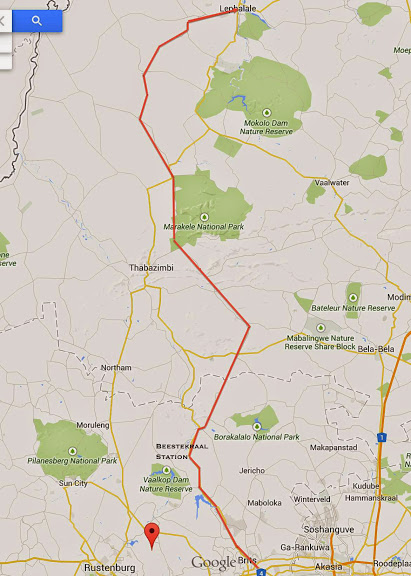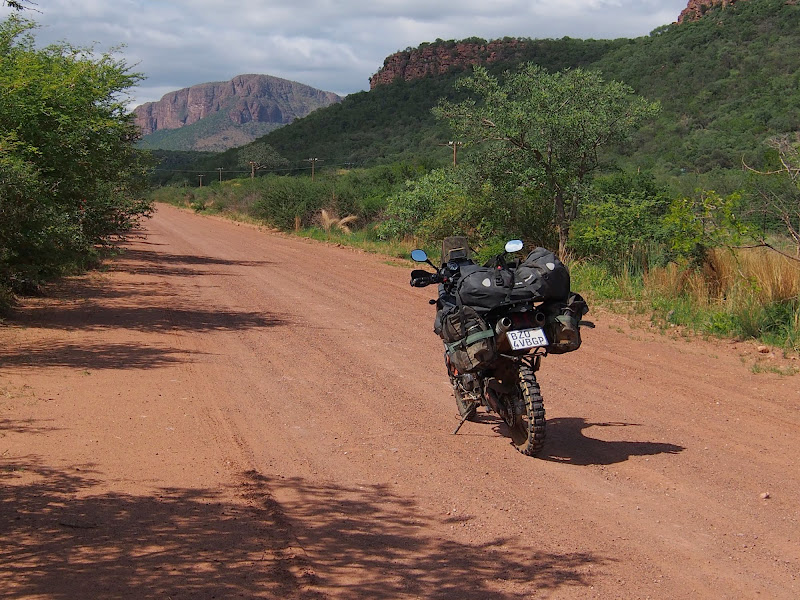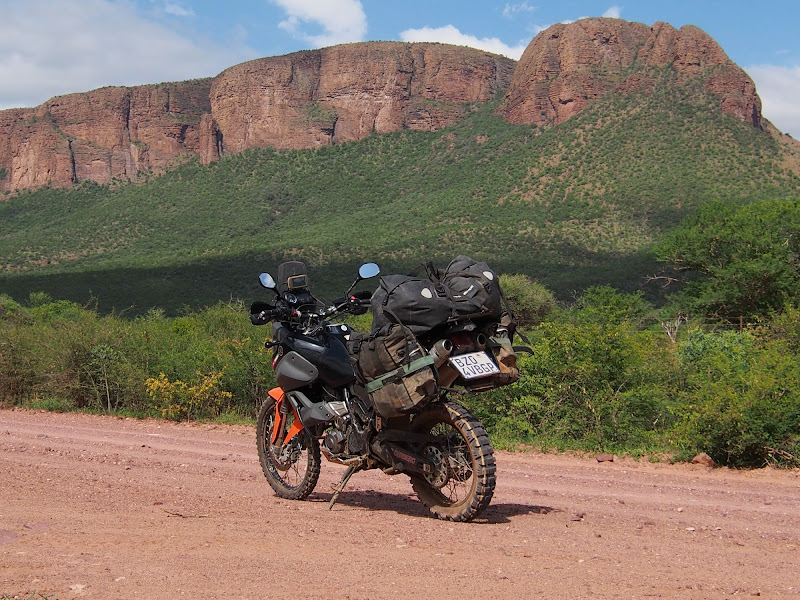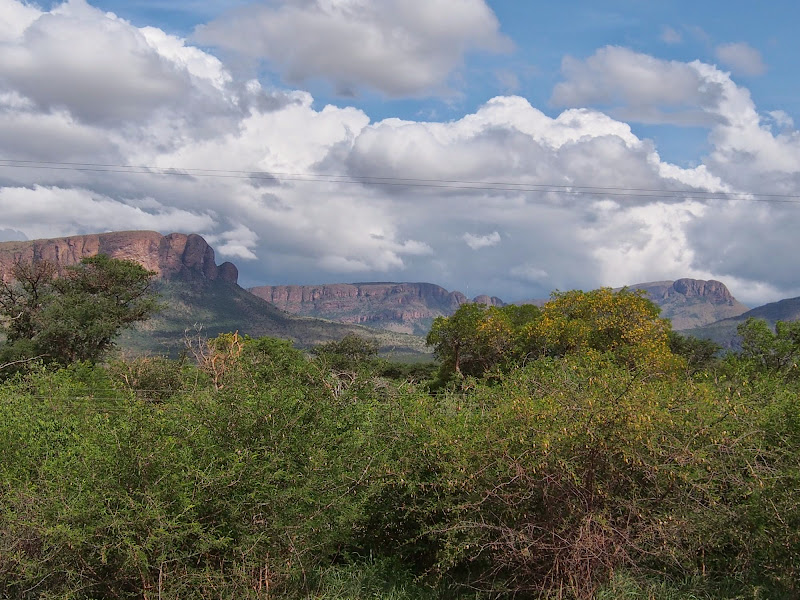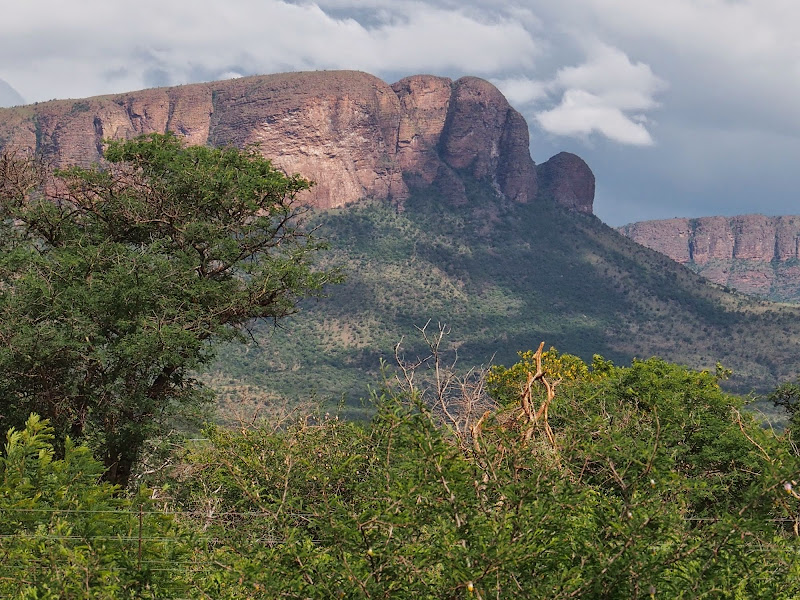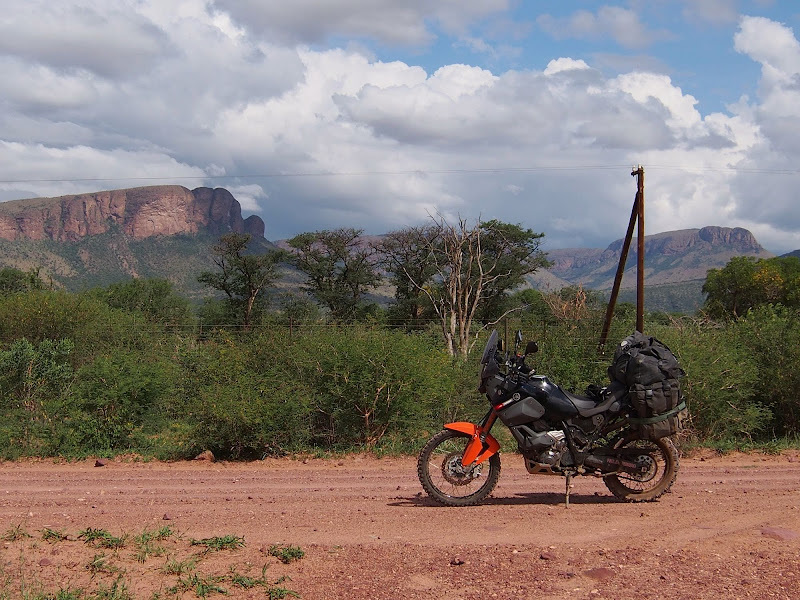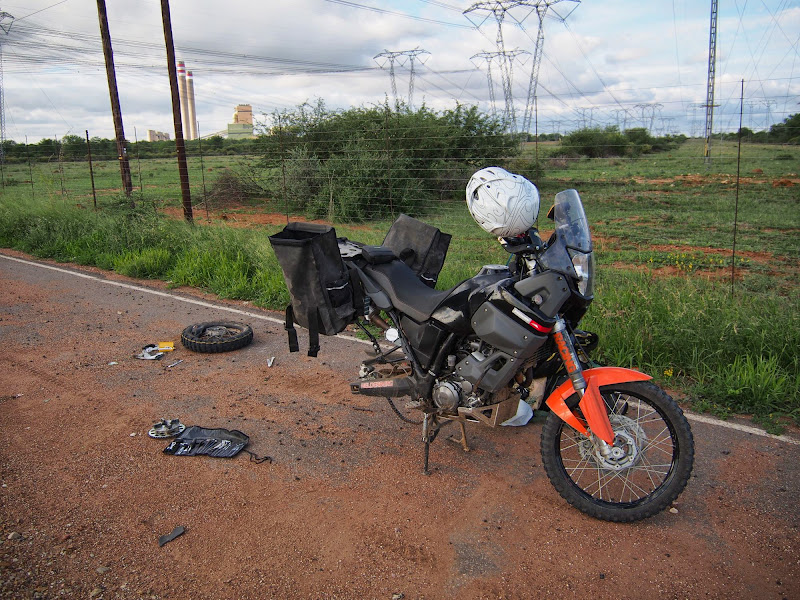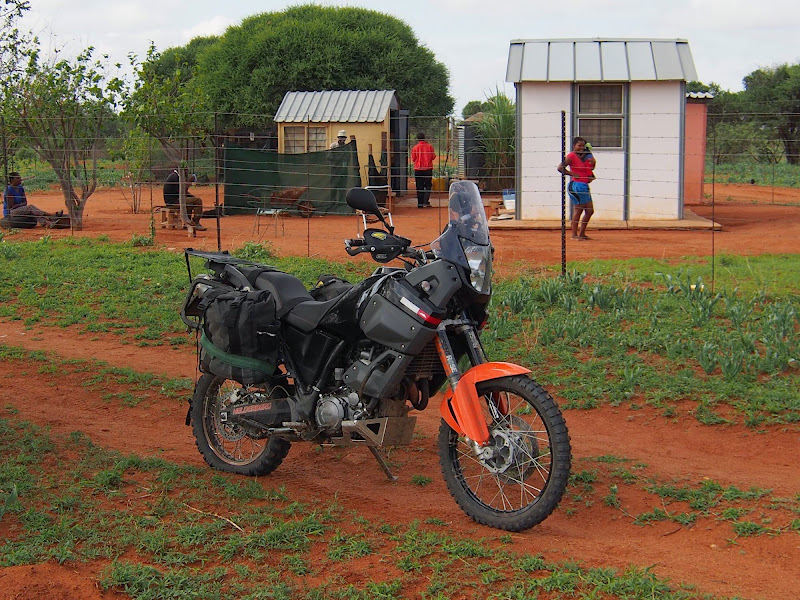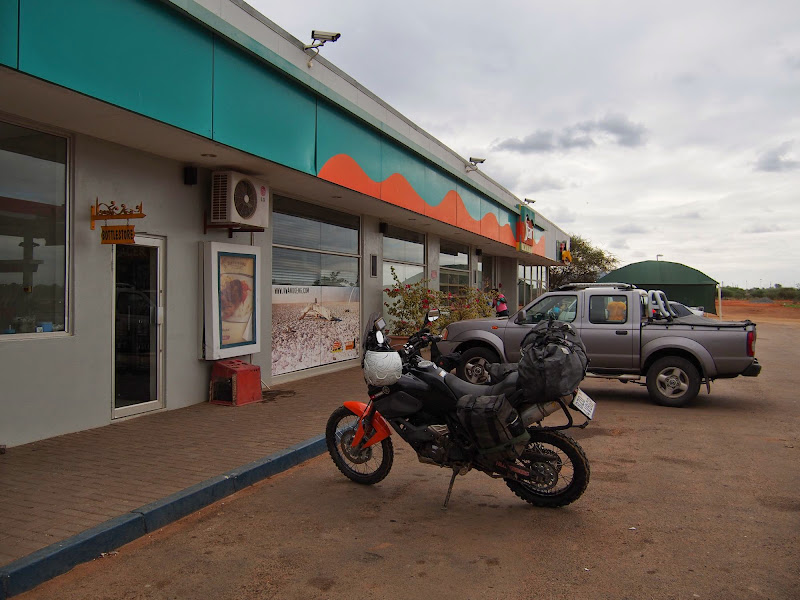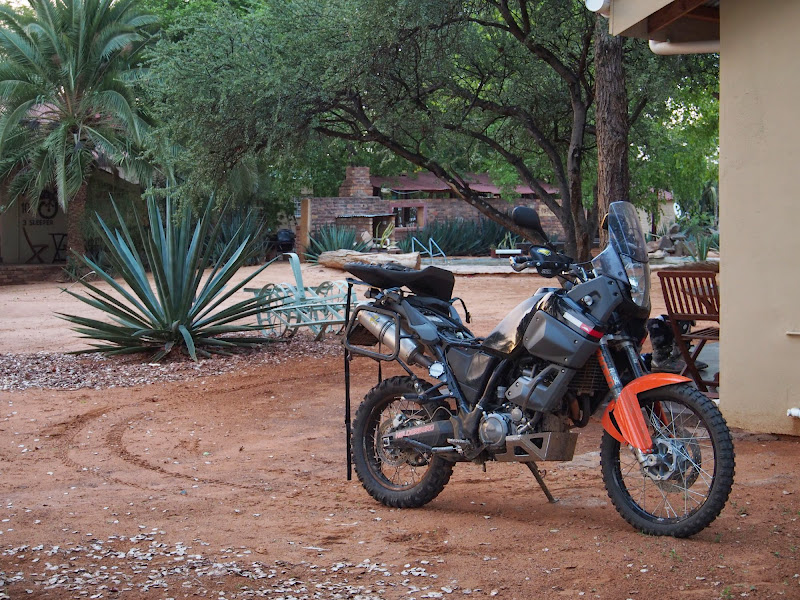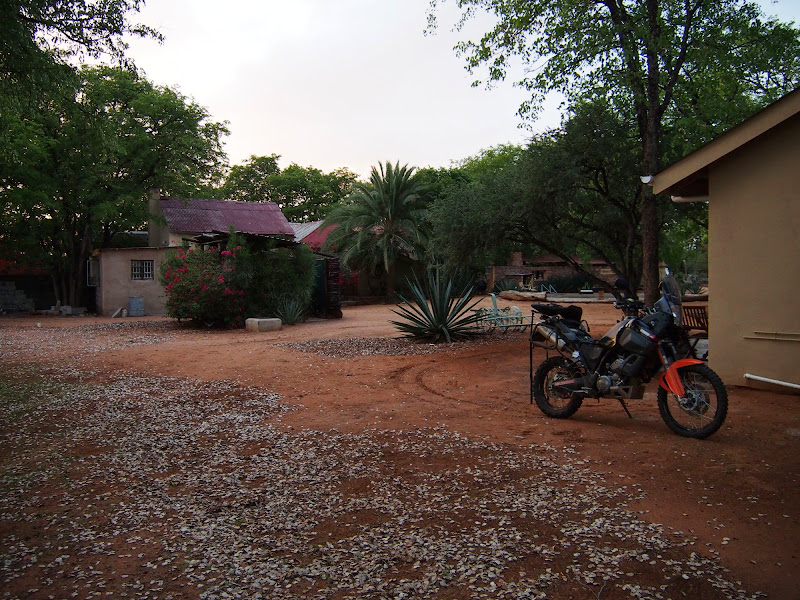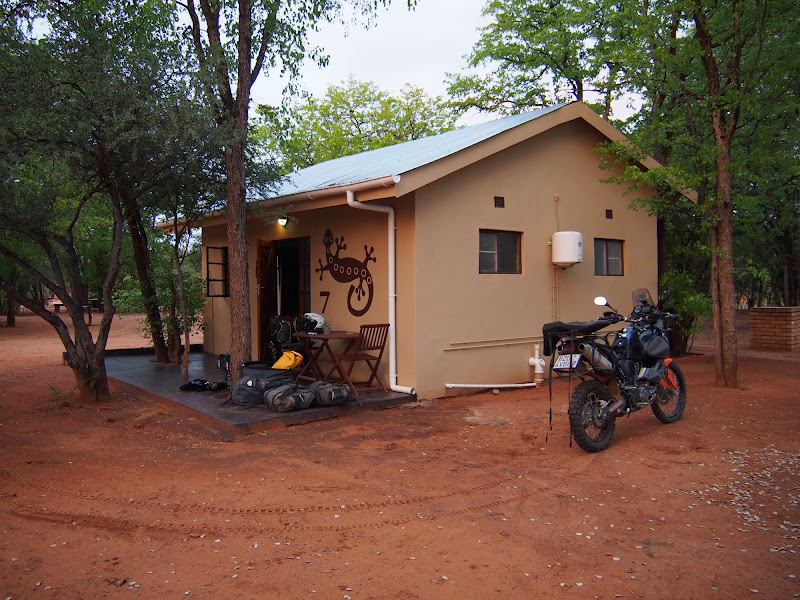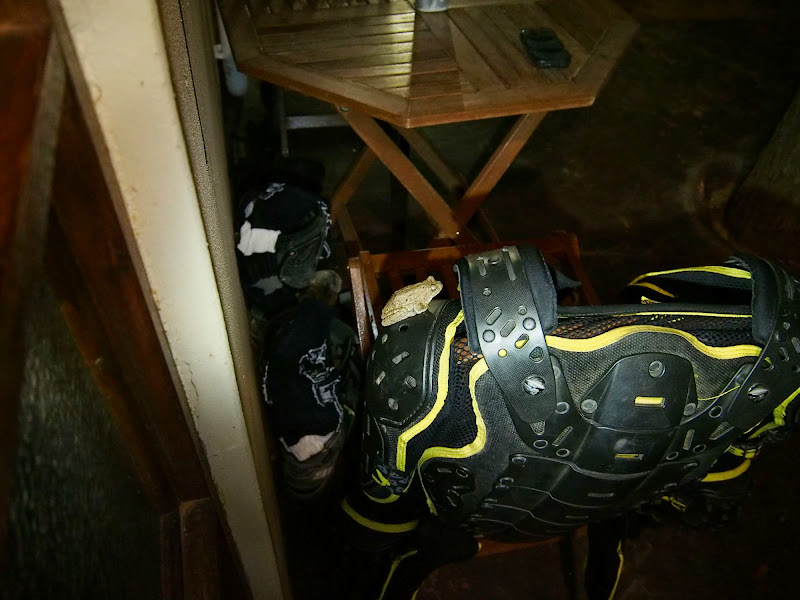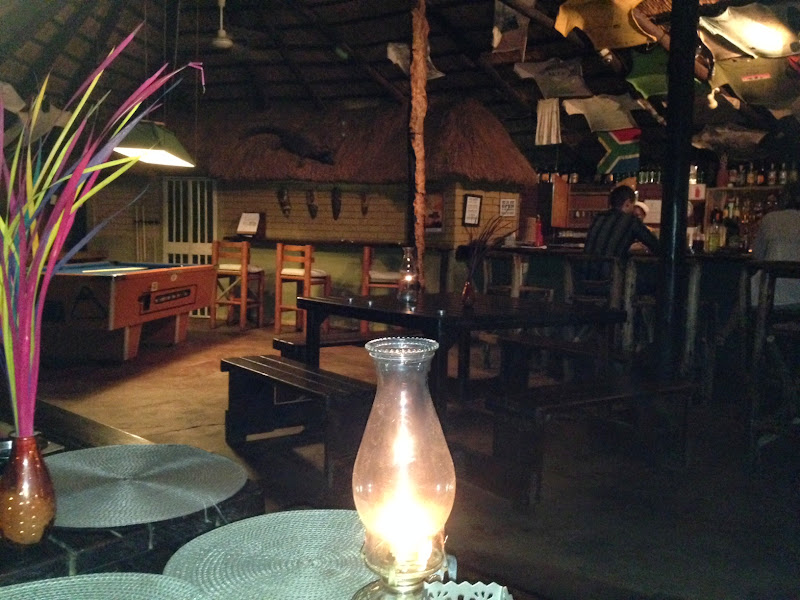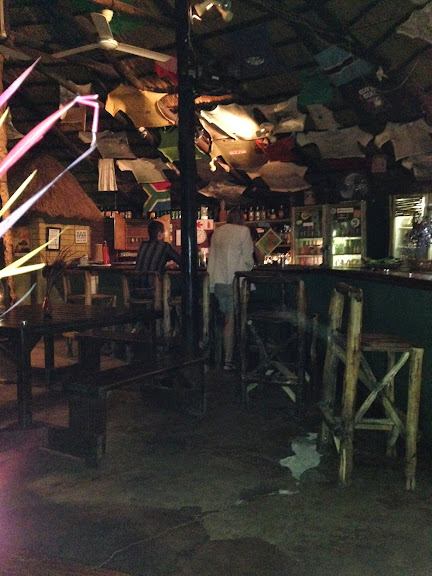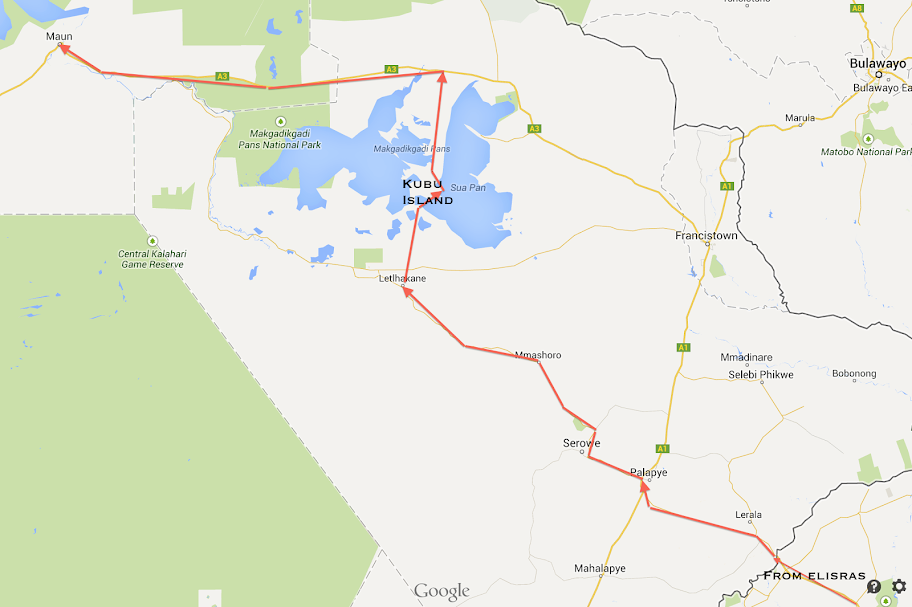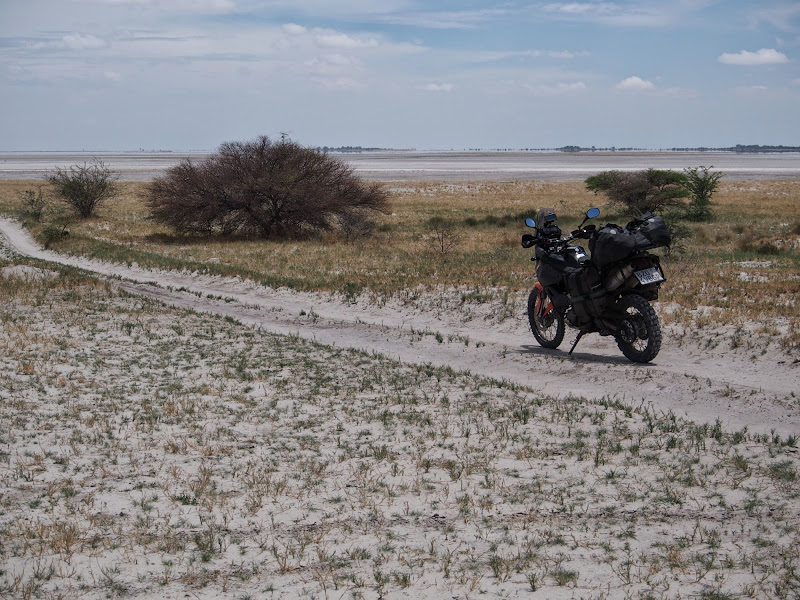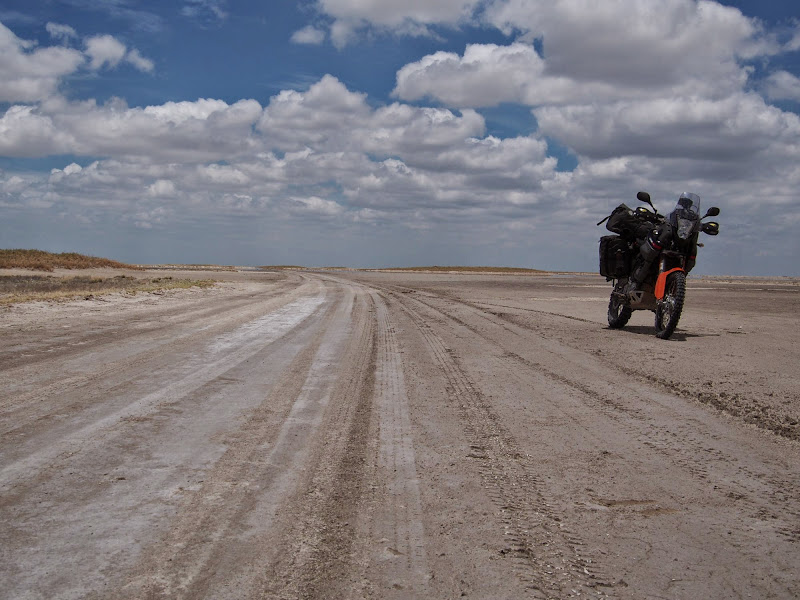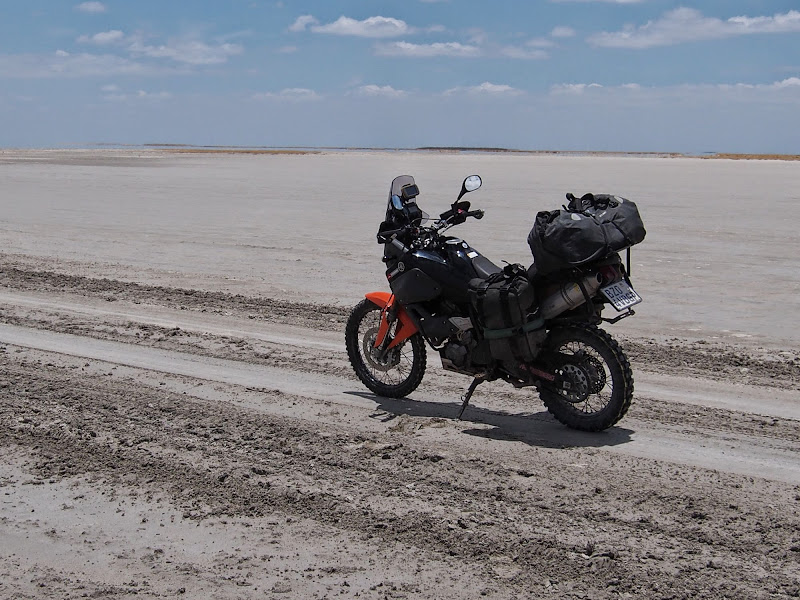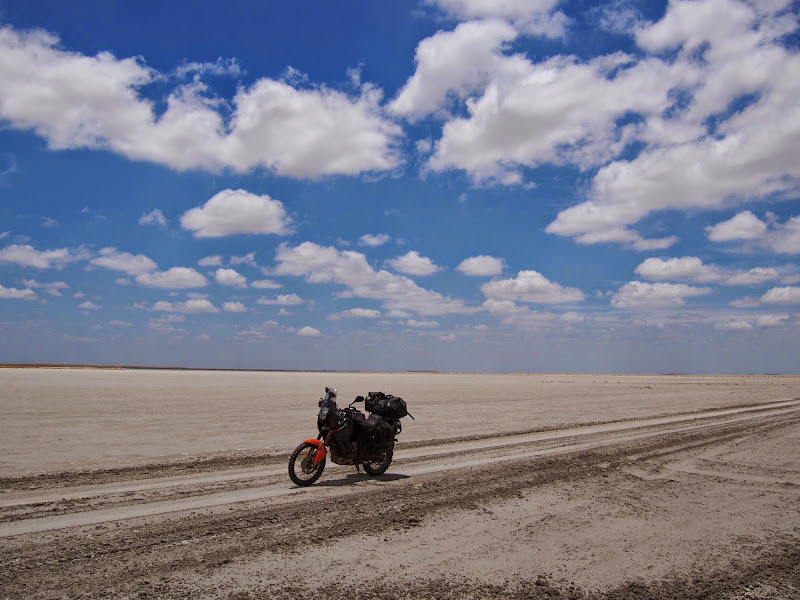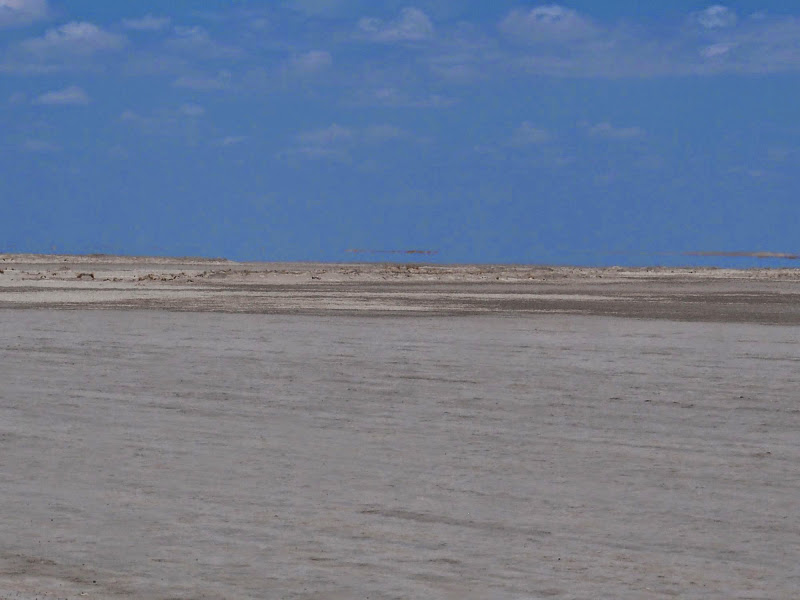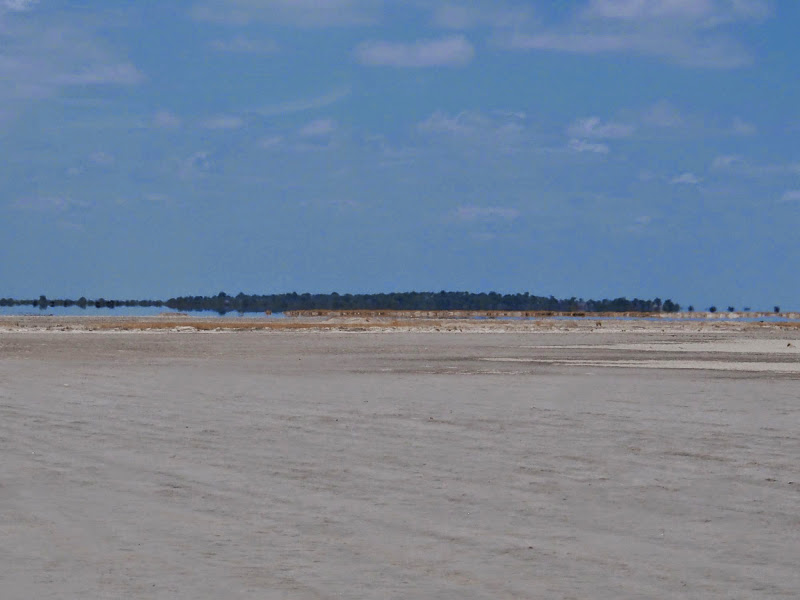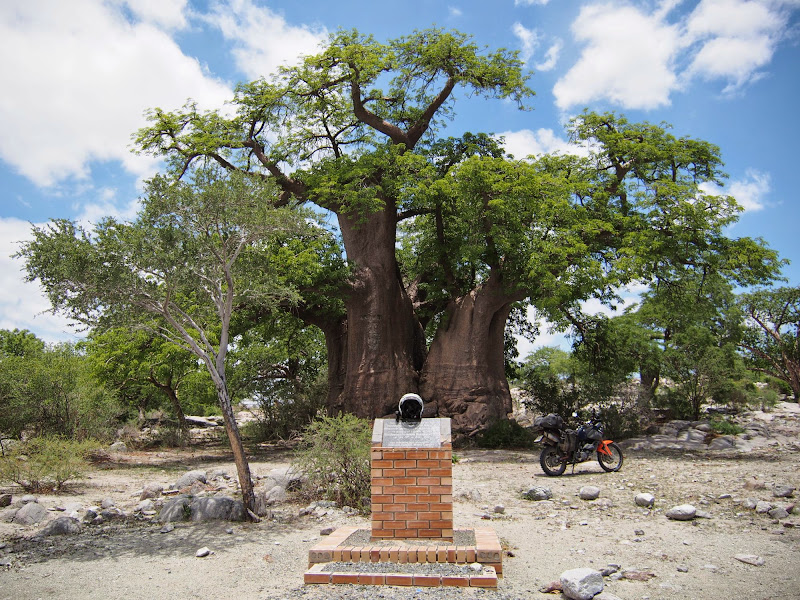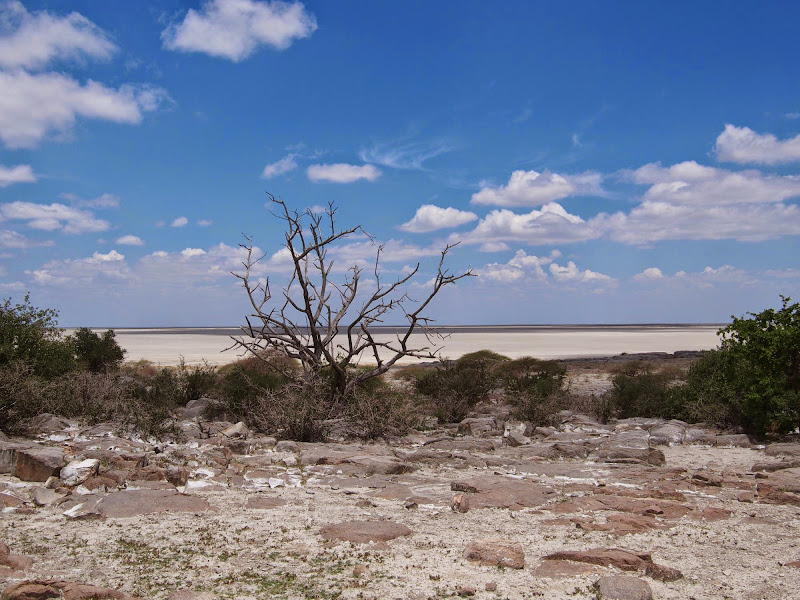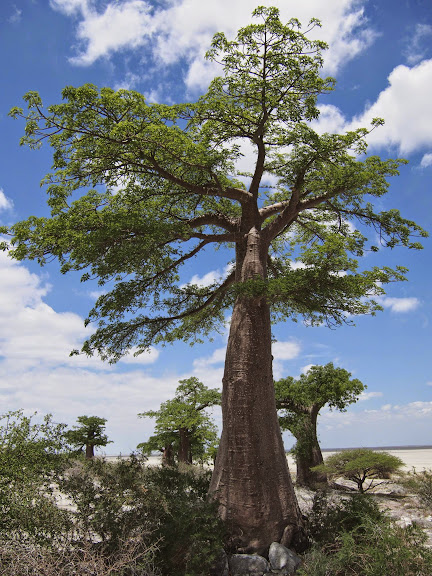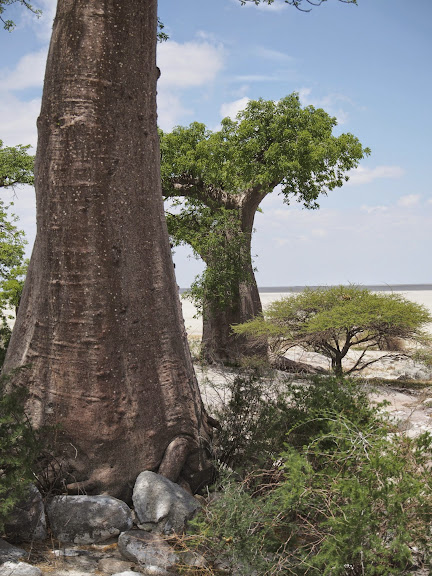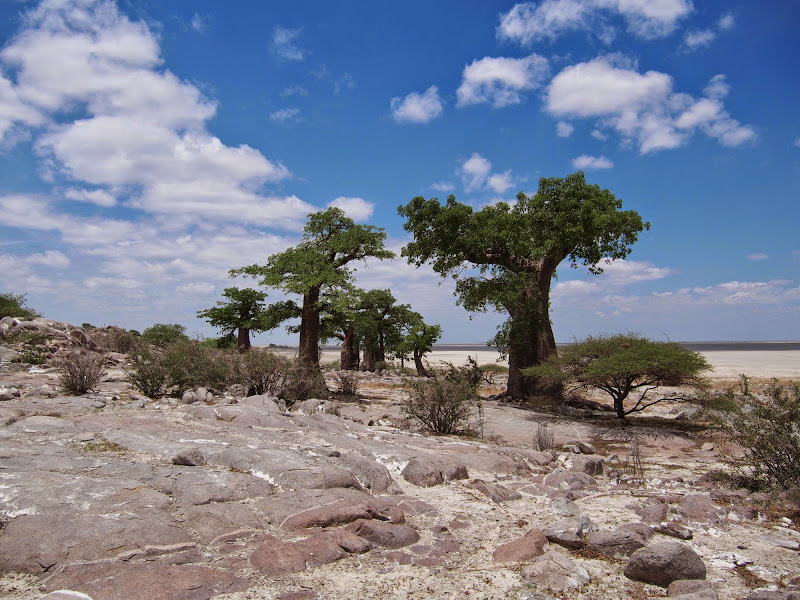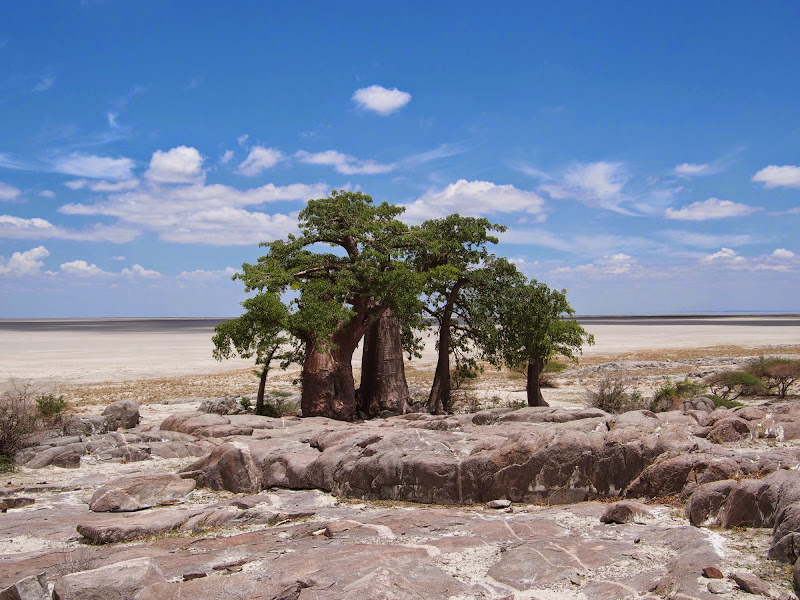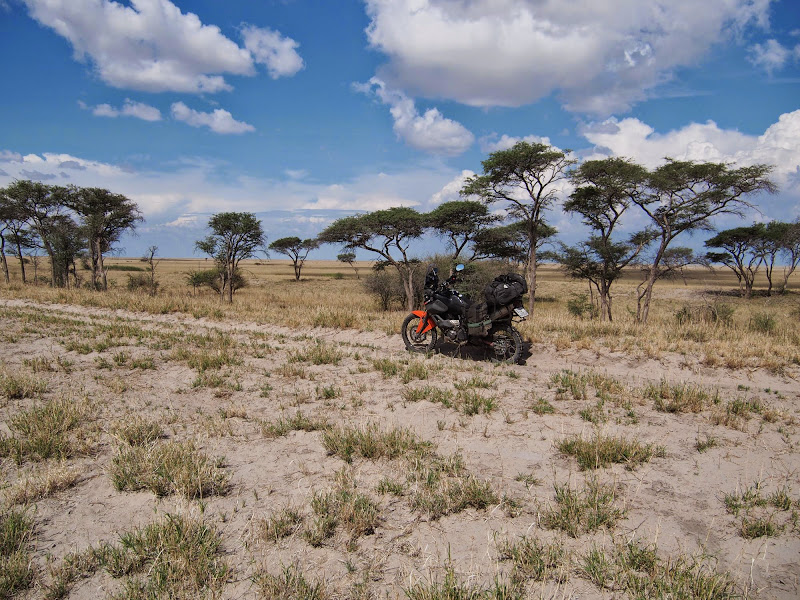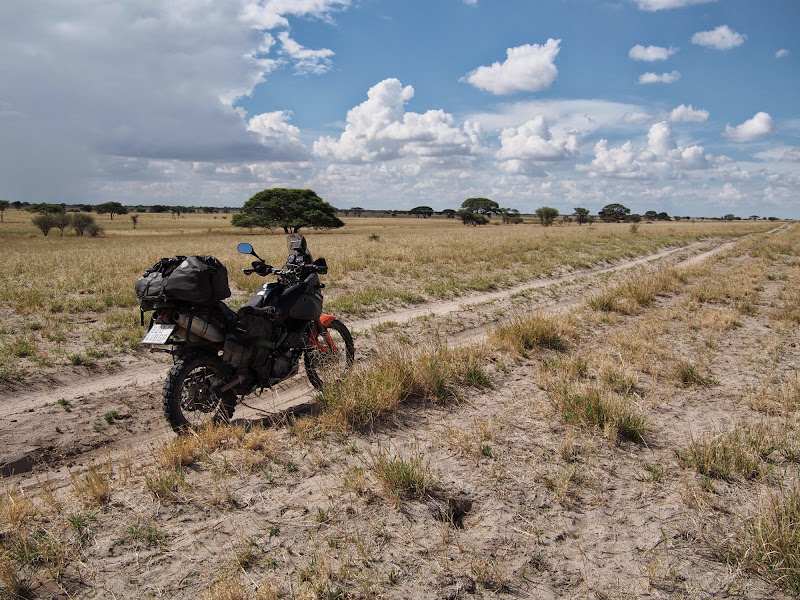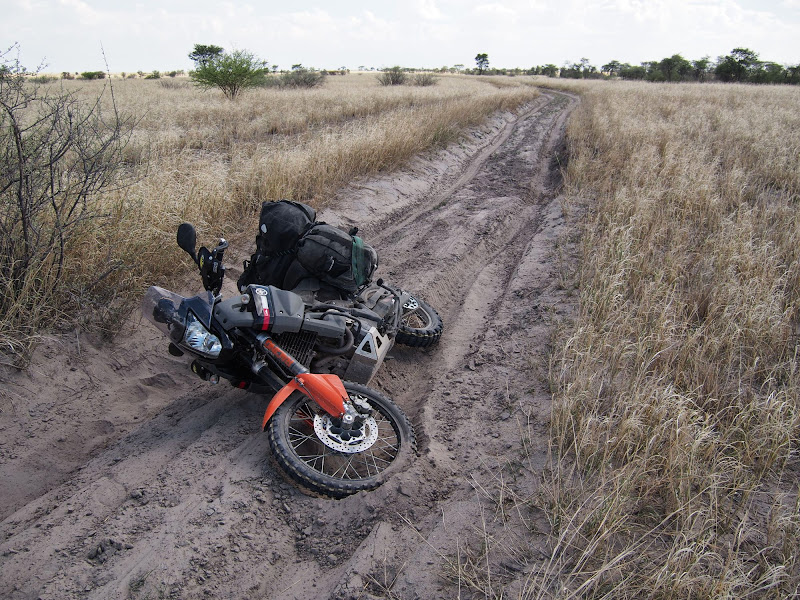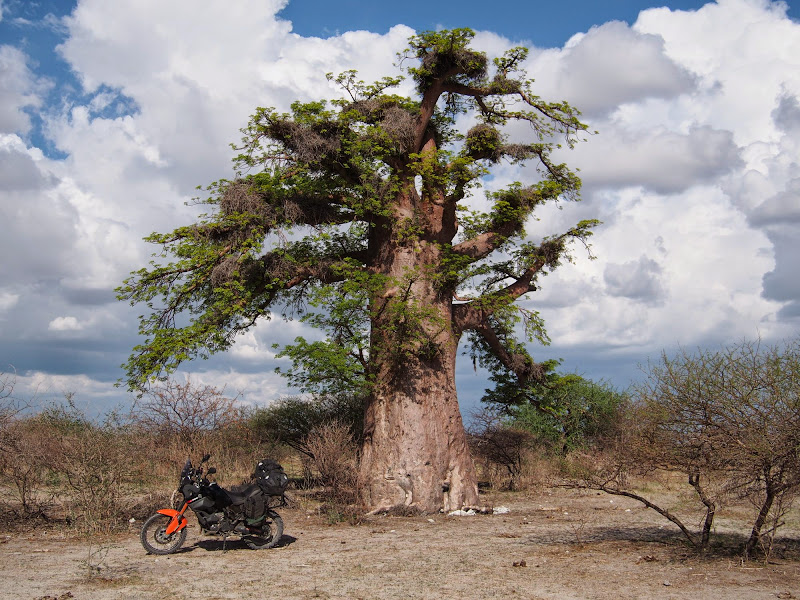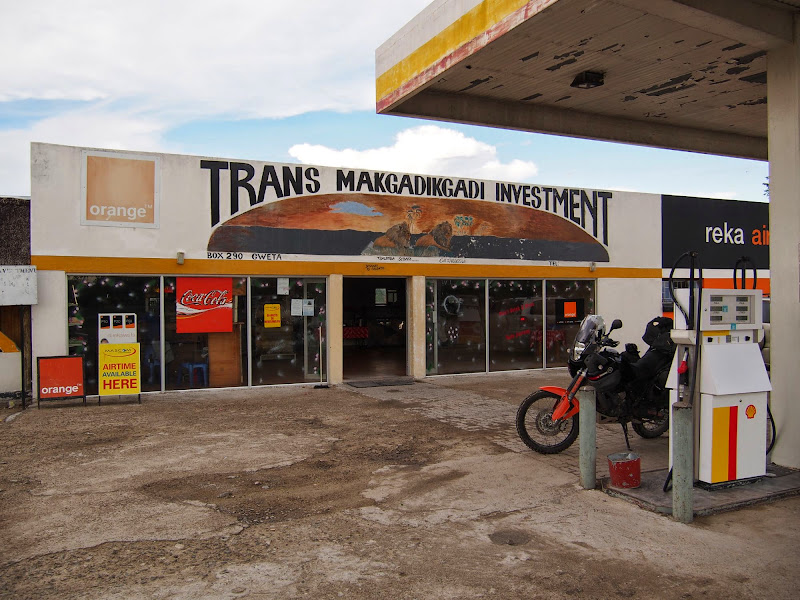Intro
2013 wasn’t a good year. I’ve been working my ass off whole year without a break, yet somehow not achieving what I was supposed to. As the year end approached I was in a bad funk, especially as I knew that at least first half of 2014 is not going to be much better. So a proper chat with the universe about WTF was in order and one of the best ways I know for that is a nice solo bike trip.
When I realised in the early December that I may be able to squeeze in 3 weeks off, I got ambitious and decided to do Richtersveld, which I haven’t done yet and then shoot up to Kaokoland and do the Van Zyl’s pass and riverbeds, which I’ve done a year ago and the good vibes of that trip carried me through the 2013. To get there - I was starting from Joburg - I wanted to cross to south Botswana and take the dirt roads heading west north of the Bots/SA border and do some game viewing around Transfrontier park, before crossing back to SA and heading to Richtersveld.
Getting back to Joburg from Kaokoland I wanted to take the northern route along the Okavango delta. Namibian side was clear - head east through Tsumeb/Grootfontein and hit the dirt roads east from there through Bushmanland to the Bots border at Dobe. The usual route then would be to connect to the tar road going to Maun at Nokaneng and then do the standard ride through Makadikadi from Gweta to Kubu to Letlhakane and then back home. However I’ve done the south side of the Okavango delta couple of times and as I stared at the map I got intrigued by the possibility to circumvent the delta from the north coming long way around to Maun through the Bots bush north of delta - not the boring Caprivi strip in Nam. This would mean to head from Nokaneng on tar up to Shakawe on the Namibian border, take ferry across Okavango, then ride south-east through Seronga on the northern shore of the delta and then north-east to Gudikwe and from there find track to Kwai village on the north-east corner of Moremi and then its just straightforward ride back south-west to Maun along the eastern boundary of Moremi.
The problem was I didn’t know if there is any track from Gudikwe to Kwai village, this whole area consist of private concessions and I didn’t know if I would be allowed there. And obviously the fact that I would have to cross about 160km between Gudikwe and Kwai of completely uninhabited area ruled by Big 5. I knew they will not let me into Moremi and Chobe NP on the bike, but from my prior trips on 4x4 I knew that there was a gap between Chobe (Mababe gate) and Moremi (North Gate) - so I assumed that I can pass through there to Mababe village and then I’m on the public road running from there to Maun.
Like so:
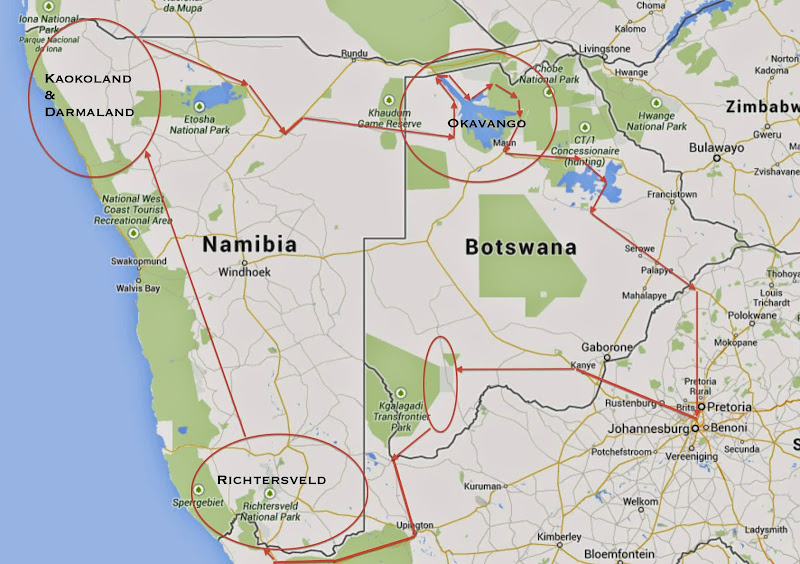
So I cranked-up Google and started looking for the answers. All I got for “Seronga to Kwai village” were two short threads on SA 4x4 forums. The good news was that you can get from Seronga to Kwai via cutlines - they were not on the T4A or any maps I had, but I could trace them on the Google Earth and saved the key waypoints. However one of the threads stated categorically that it is off-limits because of the concessions. The other one was from people who have done it in 4x4 and said that as long as you stay on the cutlines and do not camp you should be fine as the cutlines are kind of public service roads (firebreaks I believe). Additional problem was that about 50 km east from Gudikwe the cutline goes through Selinda river which is impassable during the wet season and could only be circumvented going north almost to Nam border via the concessions - so I hoped that I will outrun the wet season that was about to start.
By chance at the same time another wilddog - Goonrider started thread here on the forum about possibility to get from Maun to Kasane offroad - via cutlines, albeit different ones than the route I was looking at. The resounding consensus seemed to be not possible, you need to take the long tar route via Nata.
Result of all this research was that I was hooked onto the idea of exploring the cutlines with the Big 5 as kicker and Richtersveld and Kaokoland took back seat. I decided to change the direction of the trip and head north to the delta first, then move on to Kaokoland and - if time permits I may or may not do the Richtersveld.
Naturally, with the plan this thorough - I usually just head somewhere interesting and figure it out once there - I have ended up doing completely different route, a bit less Rambo, yet it still involving 100s of kms of cutlines in Bots, number of Big 5, and whole new country that I haven’t ridden before.
After all this planning, I have promptly engaged in my other big passion - procrastination. As a result I have started from Joburg only on the 19th of Dec - instead of the originally planned start on the 14th. On the plus side I have received new lenses I have ordered from US on eBay optimistically three days before the original departure date. On the negative side I knew I would not be able to do the originally planned route in its entirety within remaining time.
As I haven’t written any ride report, a little introduction is probably in order: I’m not originally from around here. I’m what you people call Eastern European - Czech to be specific. Don’t call them that in Prague - they are going to get even more grumpy than usual, and technically they will be right. Me, I’d rather be bundled with Romanians than many of the tribes to the west and south (just ask people who know which vibe they prefer - Romaniacs or Erzberg).
I’m not completely new to the adventure riding. I have done two bigger trips. The first - maiden one as I have made driving license and bought my first bike for the trip, was three months trip from Prague to Kasmir/Ladakh in India and back - 25k km in 2000. The second one was one year and 40k km trip from Prague to Cape Town in 2005/6 (here are some old pictures from that trip: https://www.malec.name/martin/africa/galerie.php). I got bitten by the African bug, managed to score a job in SA and stayed down here since.
While here, I have done most of the highlights in SA and the surrounding countries. The one that stands out for me was the Kaokoland done in December 2012 with my mate, who unfortunately did not finish the trip due to a fall. Here are some videos from that trip (shameless plug as I have already linked them in other WD threads):
https://youtu.be/Rde-Ch2LIL0,
https://youtu.be/rFASO6OKHww,
https://youtu.be/w-RwRPP5N2A,
https://youtu.be/vqMQXPKc_9I,
https://youtu.be/ClNcmFS2fU0,
https://youtu.be/Aco2G34gspI).
Bikewise for the trip I could chose from:
- Husky TE630 that I have used on the trip in Kaokoland and that would be ideal when the going gets tough. However it is a chore for long distance even on the gravel roads as it’s just too high strung and unstable on the long boring stretches - much like KTM 690, and no amount of rally fairings and stuff is going to change that on any of those bikes.
- Tenere 660 - the bike I’ve bought after long deliberations as my long distance tourer, with good reliability (hopefully) for solo remote dirt adventuring, adequate long distance comfort and proven/reasonably safe methods to increase performance (very sedate in standard form) for spirited dirt travelling.
As this trip involved long distances over relatively short period of time, Tenere it was.
2013 wasn’t a good year. I’ve been working my ass off whole year without a break, yet somehow not achieving what I was supposed to. As the year end approached I was in a bad funk, especially as I knew that at least first half of 2014 is not going to be much better. So a proper chat with the universe about WTF was in order and one of the best ways I know for that is a nice solo bike trip.
When I realised in the early December that I may be able to squeeze in 3 weeks off, I got ambitious and decided to do Richtersveld, which I haven’t done yet and then shoot up to Kaokoland and do the Van Zyl’s pass and riverbeds, which I’ve done a year ago and the good vibes of that trip carried me through the 2013. To get there - I was starting from Joburg - I wanted to cross to south Botswana and take the dirt roads heading west north of the Bots/SA border and do some game viewing around Transfrontier park, before crossing back to SA and heading to Richtersveld.
Getting back to Joburg from Kaokoland I wanted to take the northern route along the Okavango delta. Namibian side was clear - head east through Tsumeb/Grootfontein and hit the dirt roads east from there through Bushmanland to the Bots border at Dobe. The usual route then would be to connect to the tar road going to Maun at Nokaneng and then do the standard ride through Makadikadi from Gweta to Kubu to Letlhakane and then back home. However I’ve done the south side of the Okavango delta couple of times and as I stared at the map I got intrigued by the possibility to circumvent the delta from the north coming long way around to Maun through the Bots bush north of delta - not the boring Caprivi strip in Nam. This would mean to head from Nokaneng on tar up to Shakawe on the Namibian border, take ferry across Okavango, then ride south-east through Seronga on the northern shore of the delta and then north-east to Gudikwe and from there find track to Kwai village on the north-east corner of Moremi and then its just straightforward ride back south-west to Maun along the eastern boundary of Moremi.
The problem was I didn’t know if there is any track from Gudikwe to Kwai village, this whole area consist of private concessions and I didn’t know if I would be allowed there. And obviously the fact that I would have to cross about 160km between Gudikwe and Kwai of completely uninhabited area ruled by Big 5. I knew they will not let me into Moremi and Chobe NP on the bike, but from my prior trips on 4x4 I knew that there was a gap between Chobe (Mababe gate) and Moremi (North Gate) - so I assumed that I can pass through there to Mababe village and then I’m on the public road running from there to Maun.
Like so:

So I cranked-up Google and started looking for the answers. All I got for “Seronga to Kwai village” were two short threads on SA 4x4 forums. The good news was that you can get from Seronga to Kwai via cutlines - they were not on the T4A or any maps I had, but I could trace them on the Google Earth and saved the key waypoints. However one of the threads stated categorically that it is off-limits because of the concessions. The other one was from people who have done it in 4x4 and said that as long as you stay on the cutlines and do not camp you should be fine as the cutlines are kind of public service roads (firebreaks I believe). Additional problem was that about 50 km east from Gudikwe the cutline goes through Selinda river which is impassable during the wet season and could only be circumvented going north almost to Nam border via the concessions - so I hoped that I will outrun the wet season that was about to start.
By chance at the same time another wilddog - Goonrider started thread here on the forum about possibility to get from Maun to Kasane offroad - via cutlines, albeit different ones than the route I was looking at. The resounding consensus seemed to be not possible, you need to take the long tar route via Nata.
Result of all this research was that I was hooked onto the idea of exploring the cutlines with the Big 5 as kicker and Richtersveld and Kaokoland took back seat. I decided to change the direction of the trip and head north to the delta first, then move on to Kaokoland and - if time permits I may or may not do the Richtersveld.
Naturally, with the plan this thorough - I usually just head somewhere interesting and figure it out once there - I have ended up doing completely different route, a bit less Rambo, yet it still involving 100s of kms of cutlines in Bots, number of Big 5, and whole new country that I haven’t ridden before.
After all this planning, I have promptly engaged in my other big passion - procrastination. As a result I have started from Joburg only on the 19th of Dec - instead of the originally planned start on the 14th. On the plus side I have received new lenses I have ordered from US on eBay optimistically three days before the original departure date. On the negative side I knew I would not be able to do the originally planned route in its entirety within remaining time.
As I haven’t written any ride report, a little introduction is probably in order: I’m not originally from around here. I’m what you people call Eastern European - Czech to be specific. Don’t call them that in Prague - they are going to get even more grumpy than usual, and technically they will be right. Me, I’d rather be bundled with Romanians than many of the tribes to the west and south (just ask people who know which vibe they prefer - Romaniacs or Erzberg).
I’m not completely new to the adventure riding. I have done two bigger trips. The first - maiden one as I have made driving license and bought my first bike for the trip, was three months trip from Prague to Kasmir/Ladakh in India and back - 25k km in 2000. The second one was one year and 40k km trip from Prague to Cape Town in 2005/6 (here are some old pictures from that trip: https://www.malec.name/martin/africa/galerie.php). I got bitten by the African bug, managed to score a job in SA and stayed down here since.
While here, I have done most of the highlights in SA and the surrounding countries. The one that stands out for me was the Kaokoland done in December 2012 with my mate, who unfortunately did not finish the trip due to a fall. Here are some videos from that trip (shameless plug as I have already linked them in other WD threads):
https://youtu.be/Rde-Ch2LIL0,
https://youtu.be/rFASO6OKHww,
https://youtu.be/w-RwRPP5N2A,
https://youtu.be/vqMQXPKc_9I,
https://youtu.be/ClNcmFS2fU0,
https://youtu.be/Aco2G34gspI).
Bikewise for the trip I could chose from:
- Husky TE630 that I have used on the trip in Kaokoland and that would be ideal when the going gets tough. However it is a chore for long distance even on the gravel roads as it’s just too high strung and unstable on the long boring stretches - much like KTM 690, and no amount of rally fairings and stuff is going to change that on any of those bikes.
- Tenere 660 - the bike I’ve bought after long deliberations as my long distance tourer, with good reliability (hopefully) for solo remote dirt adventuring, adequate long distance comfort and proven/reasonably safe methods to increase performance (very sedate in standard form) for spirited dirt travelling.
As this trip involved long distances over relatively short period of time, Tenere it was.





